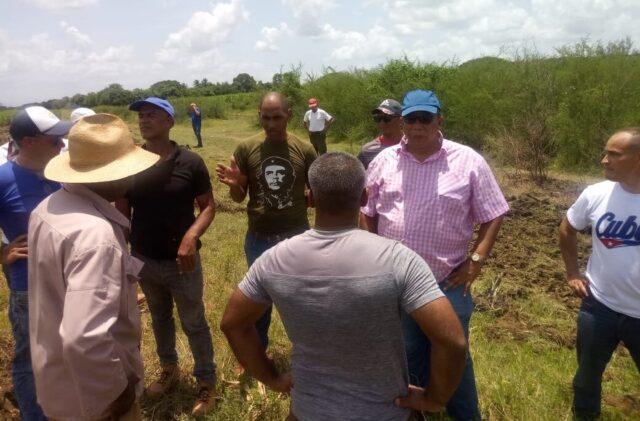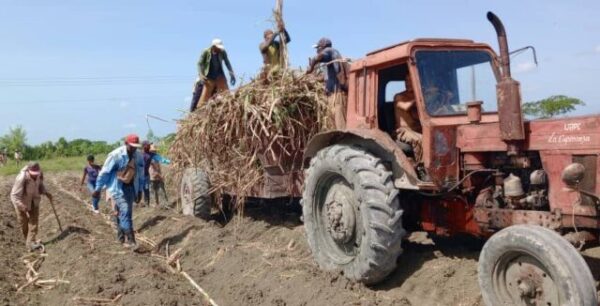 Guantanamo – The sugarcane workers in Guantanamo are working hard to advance in the planting of the sugarcane during the current July-September quarter, and thus easing the burden of the task in the final months of the year in the two locations that produce the traditional crop in the Cuban easternmost end.
Guantanamo – The sugarcane workers in Guantanamo are working hard to advance in the planting of the sugarcane during the current July-September quarter, and thus easing the burden of the task in the final months of the year in the two locations that produce the traditional crop in the Cuban easternmost end.
This was confirmed by Yoel Pérez García, the top political leader in the eastern province, during a visit to the areas aimed at planting sugarcane in the Manuel Tames and El Salvador, municipalities, where measures are being taken to have sufficient furrowed land and be in a position to increase yield, according to the management of the Argeo Martínez Agroindustrial Enterprise, the governing entity of these tasks.
Leonides Peña Rivero, director of the Guantanamo branch of the AZCUBA Business Group, said that they have now to water seeds in as many hectares as possible at planting time.
The purpose of the workers of the sugar sector in this easternmost region of Cuba is to plant more than 1,200 hectares of sugar cane, a figure that is boosted after giving the flag to the Ernesto Che Guevara brigade.

The tour of Pérez García, the highest political authority in the Guantánamo Province, also allowed verifying the progress of the recently inaugurated biofactory of vitroplants whose objective is to supply the seeds and facilitate the reproduction of plantations that respond to the agricultural needs of farmers and other forms of production.
In the El Salvador Municipality, Pérez García visited the farm of the advanced producer Jorge Fernández Omaña, where he praised the quality of the transgenic corn crop, a variety with very high yield per hectare and which contributes greatly to the balance of human and animal food.

The productive lands of the Agroforestry and Grain Enterprise of Niceto the municipality Pérez, also received the visit of the main party leader of Guantánamo, who in a lively dialogue with his decision-makers and labor force, tackled the science and economic thought at the center of the discussions of the groups, as a work method that will lead the province along the paths of economic and productive recovery.
Pérez García summarized in Caimanera his tour of the municipalities of the West of the province, in which he called for the immediate and adequate exploitation of the nearly 100 hectares of land that from Niceto Pérez, pass to the patrimony of the First Anti-Imperialist Trench of Cuba, with the purpose of increasing its agricultural production.
Likewise, he called to the workers of the Frank País Salt Enterprise, once they have completed the repair and maintenance work they are doing at the industrial plant and other areas in order to improve commercial production, labor productivity and economic efficiency at the largest salt producing factory in the country.
Translated by Liubis Balart